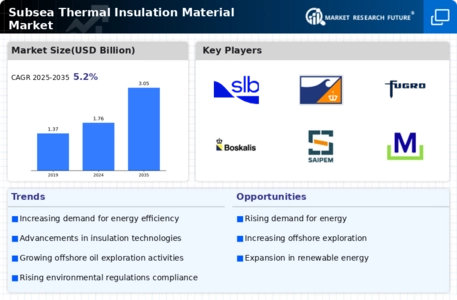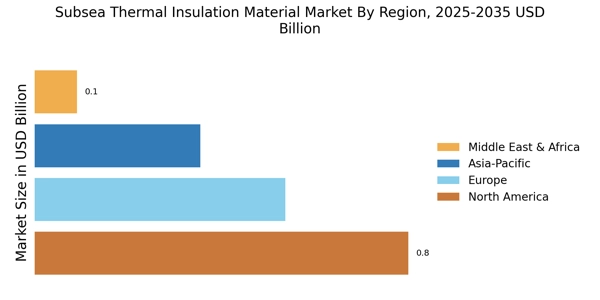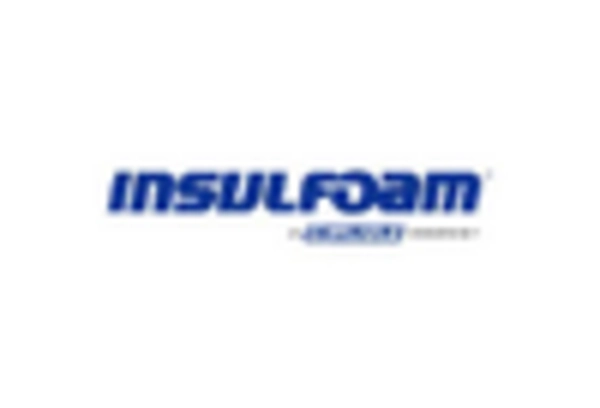Increasing Demand for Energy
The Subsea Thermal Insulation Material Market is experiencing a surge in demand driven by the increasing need for energy resources. As countries strive to meet their energy requirements, subsea exploration and production activities are expanding. This trend necessitates the use of effective thermal insulation materials to ensure the integrity and efficiency of subsea pipelines and equipment. According to recent estimates, the subsea thermal insulation materials market is projected to grow at a compound annual growth rate of approximately 6% over the next five years. This growth is largely attributed to the rising investments in offshore oil and gas projects, which require advanced insulation solutions to mitigate heat loss and maintain operational efficiency.
Expansion of Subsea Infrastructure
The Subsea Thermal Insulation Material Market is experiencing growth due to the expansion of subsea infrastructure. As exploration and production activities extend into deeper waters, the need for robust thermal insulation solutions becomes paramount. New subsea pipelines, risers, and other infrastructure require materials that can withstand extreme conditions while maintaining thermal efficiency. The market is likely to see increased investments in subsea projects, driven by the need to enhance energy security and meet rising demand. This expansion is expected to create opportunities for manufacturers of thermal insulation materials, as companies seek reliable solutions to ensure the performance and safety of their subsea operations.
Rising Offshore Wind Energy Projects
The Subsea Thermal Insulation Material Market is poised for growth due to the rising number of offshore wind energy projects. As nations invest in renewable energy sources, the demand for subsea thermal insulation materials is expected to increase. These materials are essential for protecting subsea cables and components from thermal fluctuations, ensuring optimal performance and longevity. The offshore wind sector is projected to expand significantly, with investments reaching billions of dollars in the coming years. This trend not only supports the growth of the subsea thermal insulation materials market but also aligns with global sustainability goals, as renewable energy projects require efficient thermal management solutions.
Regulatory Compliance and Safety Standards
The Subsea Thermal Insulation Material Market is significantly influenced by stringent regulatory compliance and safety standards. Governments and regulatory bodies are increasingly enforcing guidelines that mandate the use of high-performance insulation materials in subsea applications. These regulations aim to enhance safety and environmental protection, thereby driving the demand for advanced thermal insulation solutions. Companies operating in the subsea sector are compelled to adopt materials that not only meet these standards but also provide long-term durability and performance. As a result, the market for subsea thermal insulation materials is likely to witness growth as firms invest in compliant solutions to avoid penalties and ensure safe operations.
Technological Innovations in Material Science
The Subsea Thermal Insulation Material Market is benefiting from ongoing technological innovations in material science. Advances in polymer chemistry and composite materials are leading to the development of new insulation products that offer superior thermal performance and resistance to harsh subsea conditions. These innovations are crucial for enhancing the efficiency of subsea operations, as they reduce heat loss and improve the longevity of subsea installations. The introduction of smart materials that can adapt to environmental changes is also gaining traction. As these technologies evolve, they are expected to play a pivotal role in shaping the future of the subsea thermal insulation materials market, potentially increasing market share and attracting new investments.


















Leave a Comment